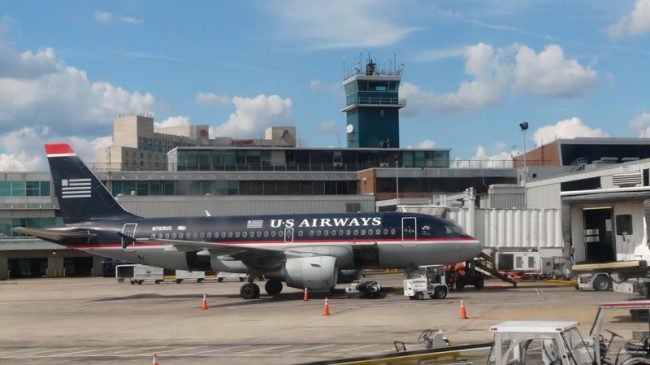Executive Summary
In today’s aviation industry, advancements in air traffic control technologies and procedures promise to enhance safety and efficiently accommodate demand from commercial airlines and general aviation. Although having an air traffic control tower is not required for airline service in the U.S., a tower provides benefits of increased safety as well as assurance for the business community that the area served by the airport is credible and “on the map.”
Most small airports that have towers are served by contract towers, approved by the Federal Aviation Administration (FAA) and operated by various private companies, often using former military and FAA controllers. Studies by the U.S. DOT’s Office of the Inspector General found that contract towers provide equivalent service to FAA-operated towers at airports with comparable activity levels—but cost only 26% as much to operate. The FAA contracts with these firms, paying for the costs of air traffic controllers, with the private companies typically paying the balance of operating costs. Small airports qualify for a contract tower only if the FAA finds that the benefits exceed the costs (i.e., a benefit/cost ratio of at least 1.0).
During the 2013 federal budget sequester, 189 contract towers were scheduled to be shut down for the balance of that fiscal year. But Congress approved an emergency transfer of funds from the FAA’s airport grants program (AIP) to the FAA Operations budget, which saved those towers from being shut down. However, at the start of fiscal year 2014, the FAA instituted a moratorium on any additions to the contract tower program. As of now, the waiting list for the program includes as many as 16 small airports. The FAA is also studying revisions to its benefit/cost methodology, though what these will be, when they will be finalized, and how they will be shared are not known.
For some smaller airports, “remote towers” offer a possible alternative. The idea is that instead of constructing a tall building with a control cab on top to house the controllers, just erect a pole with an array of sophisticated video cameras and communications gear, and securely communicate all that information to controllers in a ground-level building housing the control room. Instead of the traditional “out-the-window” view, the controllers would have a panoramic video display of the airfield and its environs. That “remote tower center” could be located at the airport in question, or it could be located at a considerable distance. In the case of low-activity airports, it is possible to locate controllers responsible for several small airports in a single remote tower center.
Simulations by the FAA at its Atlantic City research center in 2007 demonstrated that a remote tower can provide better surveillance at night and in rain, fog, or snow conditions, thanks to the infrared and other camera equipment, and other advanced technologies. Experienced controllers and supervisors preferred the remote tower to a conventional tower after using both during the simulations. Hence, a remote tower can improve safety margins and provide operational benefits compared to a conventional tower. Moreover, the construction cost is significantly lower than building a tall, occupied structure. And in some configurations, the operating costs can be lower, especially in cases where several low- activity airports are controlled from a single remote tower center. With the benefits greater than a conventional tower and the costs lower, a B/C ratio greater than 1.0 will be easier to achieve for many small airports.
Unfortunately, the FAA has no current program to develop and implement remote towers, presumably due to its ongoing budget problems and other priorities. By contrast, remote towers are already in operation in a number of European countries:
- Sweden certified the first remote tower operation in the world in 2016, controlling air traffic at Örnsköldsvik from a remote tower center at Sundsvall, 93 miles away. In 2017, it plans to add control of two more small airports from Sundsvall.
- Norway is under way in 2017 developing a remote tower center to control traffic at five small airports, with a goal of increasing that to 20 by 2020.
- Germany will open its first remote tower center in Leipzig in 2017 to control air traffic at Saarbrücken; that center will subsequently also be responsible for Dresden and Erfurt.
- Ireland in late 2016 completed the first operational trial of controlling two airports— Cork and Shannon—from a remote tower center at Dublin Airport.
- NATS, the air traffic control company for the United Kingdom, will replace the current tower at London City Airport with a remote tower. Air traffic for the four-million-passenger airport will then be controlled at Swanwick, about 80 miles away. NATS and its partner Saab will begin construction in 2018 with operations commencing the following year.
The ATC providers in these countries are self-supporting ATC corporations not subject to government budget problems. By contrast, the FAA’s chronic budget problems result in it having no remote tower program.
The only two U.S. pilot projects—at Leesburg, VA and Loveland, CO—are funded by state and private money. The path forward for remote towers becoming generally available to U.S. airports is unclear.
Hence, the outlook for small airports is unclear under the status quo. Were Congress or the FAA to permanently lift the moratorium on new contract towers, it is unclear where increased budget dollars for the program would come from, given the agency’s inability to fund much-needed replacements of its larger, aging facilities such as en route centers and TRACONs. Likewise, the likelihood of the FAA creating a budget for a new remote towers program seems very low, despite the obvious benefits this would provide to airports of all sizes.
On the other hand, were the Air Traffic Organization separated from the federal budget and made self-supporting from customer charges, like its counterparts in Europe, moving ahead with remote towers would be a simple business decision, as part of overall modernization and facility replacement and consolidation.
